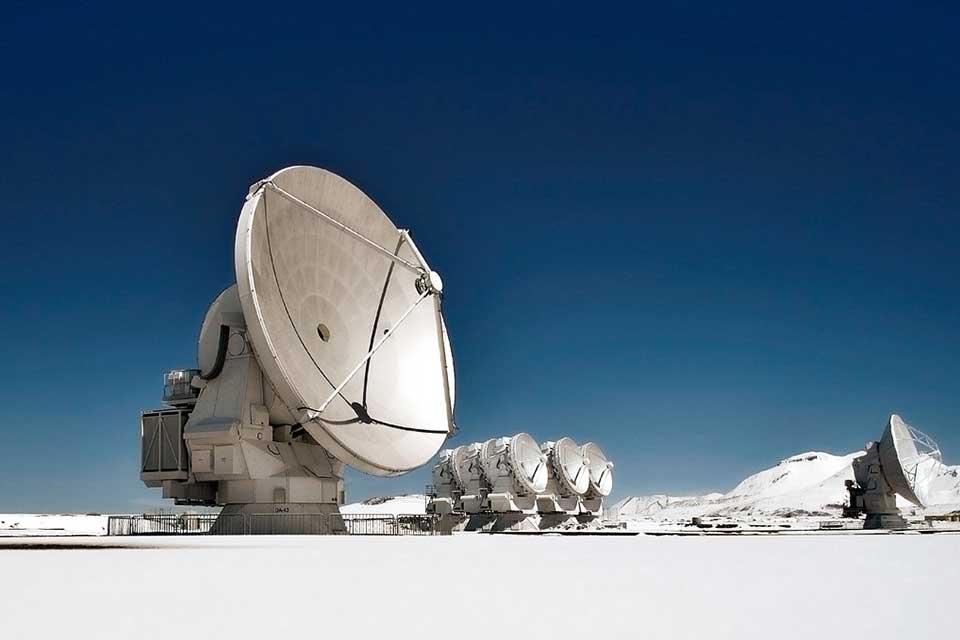An international group of researchers, including Dr Gareth Jones from Oxford’s Department of Physics, has put forward an alternative theory to the creation of a class of bright, massive galaxies in the early Universe: the group suggests that star formation fuel comes from many small gas clouds rather than discrete galactic collisions as previously thought.
These hot dust-obscured galaxies, also known by the acronym Hot DOGs, are very rare, hyper luminous systems and can reach luminosities of more than ten trillion times that of our Sun. Hot DOGs host vigorous star formation and a huge load of material is accreted onto their central supermassive black hole. These mechanisms emit a vast amount of radiation, that heats the interstellar gas and dust, releasing an enormous amount of infrared light – thousands of times more than our Milky Way.
Hot DOGS key to understanding galaxy evolution
There is a growing consensus that these bright, massive Hot DOGs represent a key stage in galaxy evolution; prominent winds powered by the active galactic nucleus are super-efficient in ejecting the dusty interstellar medium, leading to the transition from dusty starbursting galaxies to ultraviolet-luminous unobscured quasars, and finally to giant elliptical galaxies.
‘Theoretical models predict that these monsters can grow via galaxy mergers, that can deliver large amounts of gas towards their centres, inducing the formation of new stars and feeding the supermassive black holes,’ comments Dr Michele Ginolfi from the European Southern Observatory in Garching who led the work. ‘However, the observational investigation of this class of extreme objects has only started recently, and there are still many mysteries about the physical processes that can drive their growth.’
Using the Multi Unit Spectroscopic Explorer (MUSE) instrument on the Very Large Telescope (VLT) in Chile, the group observed one of these Hot DOGs. Because of its large distance and the finite travel speed of light, they were able to see it as it was when the Universe was only 1.8 billion years old – meaning the light travelled for 12 billion years before it was observed on Earth.
Complementary observations
These observations showed that this bright source was surrounded by a swarm of 24 smaller galaxies. A density this high suggests that the galaxies will collide and merge in the future. However, complementary observations of this source with the Atacama Large Millimetre/submillimetre Array (ALMA) telescope in Chile revealed that the central galaxy is still undergoing ordered rotation, with no sign of disturbance from mergers. So, it is likely that the star formation fuel for this primordial starburst galaxy comes from many small gas clouds, rather than discrete galactic collisions.
‘The ALMA data allows us to determine how the gas in the galaxy is moving by revealing the Doppler shift of the light – think of the changing frequency of a fire engine siren as it passes you,’ explains Dr Jones. ‘We would expect the gas in a bright Hot DOG like this to be moving randomly. Detecting a bright massive galaxy in the early Universe that isn’t marred by galaxy mergers is a surprise that may influence future galaxy evolution models.’
Detection of companion galaxies around hot dust-obscured hyper-luminous galaxy W0410-0913, M Ginolfi et al, Nature Communications, 5 August 2022

